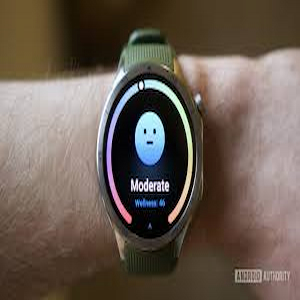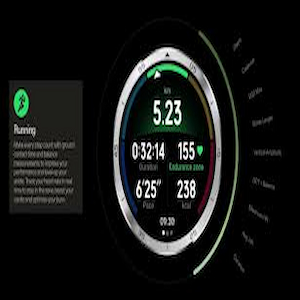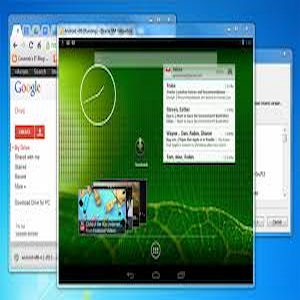The OnePlus Watch 3 health dashboard comes first. With its eight distinct data points—daily steps taken, calories burned, workout minutes, activity sessions, heart rate with averages and a graph, sleep time plus a graph, mind and body score, and SpO2 measurements—the OnePlus OHealth app (I don’t like the name of this app, but whatever) makes great use of screen real estate.
The most significant average metrics are visible as soon as you launch the Fitbit app, which is used by the Pixel Watch 3, whereas the Fitbit app only displays five data points up front. This gives OnePlus a significant design advantage.
OnePlus Watch 3, Build and Design
I’ve been wanting to see several design and display updates on smartwatches for a while, and the OnePlus Watch 3 finally delivers. If you prefer to work out with the crown facing your hand, it has a rotating crown at the 2 o’clock position rather than the awkward 3 o’clock position.
Larger than the one on the Watch 2, this digital crown also functions as a rotating crown for menu navigation. Together with its size, it has a nice grippy texture that makes it very user-friendly. Its scrolling haptics are similar to those of the Pixel Watch, which adds to its allure. Without a doubt, this is the greatest digital crown available on any smartwatch.
In contrast to the previous two, OnePlus made the Watch 3’s screen larger and its bezels smaller while maintaining the same watch size. The 10-minute tick marks add a little visual flair that I think improves the design over the all-glass front of the Watch 2, and I think the bezel looks much nicer now that it has a protective metal bezel around the face.
Display
A bright, vivid DC-dimmed OLED panel that is easy to see in the sun but won’t burn your eyes in a dark room is another feature of the watch. All of this is possible without compromising display quality or brightness. If I ever saw one, it was a win-win. Because PWM dimming, which is used by many other smartwatches, is bad for people who are flicker-sensitive, OnePlus is leading the way in Wear OS eye health.
OnePlus Watch 3 Health Dashboard, Testing
I attended a Spartan Race last year sporting a Pixel Watch 3 and a OnePlus Watch 2. The OnePlus Watch 2 performed admirably, but it had a heart rate sensor issue that plagued it most of the time I used it. In essence, if your heart rate increased too quickly, the watch appeared to disregard any high heart rate data. This watch just wasn’t a good fit for me, especially considering how hard I usually work out.
All of that is fixed by the OnePlus Watch 3, which also performs a number of fitness tracking tasks better than the Pixel Watch 3 in addition to matching data from the latter, which I have been wearing since it was released due to its accurate heart rate sensor.
OnePlus Watch 3, Health Dashboard
The health dashboard comes first. With its eight distinct data points—daily steps taken, calories burned, workout minutes, activity sessions, heart rate with averages and a graph, sleep time plus a graph, mind and body score, and SpO2 measurements—the OnePlus OHealth app (I don’t like the name of this app, but whatever) makes great use of screen real estate.
The most significant average metrics are visible as soon as you launch the Fitbit app, which is used by the Pixel Watch 3, whereas the Fitbit app only displays five data points up front. This gives OnePlus a significant design advantage.
The OnePlus OHealth app’s drawback is that it’s not as adjustable as Fitbit’s view. For better or worse, you get what you see.
READ MORE: OnePlus Watch 3 Review: Cutting-Edge Tech Meets Style
The remainder of the OnePlus Watch 3 experience follows the same design guidelines. The OnePlus Watch 3 shows a lovely small map with an amazing breakdown of your fitness stats after you’ve finished an outside run or stroll. The graphs are easy to read, and you can view more information if you’d like.
In addition to saying “good job” and providing a few statistics, the Pixel Watch 3’s presentation of the data is frequently far too brief. Only the Fitbit app on your phone has access to any extra information, and even then, a large portion of it is concealed behind a paywall.
OnePlus Watch Health Dashboard, AI processing functions
I also adore the fact that my OnePlus Watch 3 watch data is stored on both my phone and my watch. For some of its AI processing features, OnePlus analyzes my workouts using standardized cloud data, but nowhere in the cloud is my actual workout data being analyzed. Everything is done over the phone.
Not only is it better for privacy, but it also eliminates the need for a monthly subscription to access all of your data. OnePlus is not alone in this; Samsung also does it, but it’s a welcome departure from the Fitbit subscription-heavy Pixel Watch.
Each workout breakdown from OnePlus also has some very helpful information that I don’t see on Fitbit or my Pixel Watch.
OHealth App, OnePlus Watch 3 Health Dashboard
The map created by the OnePlus OHealth app following an outside run or stroll is not only more aesthetically pleasing than the one on the Pixel—it automatically displays a proper satellite view—but it also moves like a hiking map created by AllTrails. Additionally, you have the option to display two of the eight data points on this map, each with its own line designs, route and map styles, and video lengths for the animated map.
Anyone training to become more physically fit can benefit greatly from seeing all of this data on a map since it makes it easier to spot trouble spots on a typical route and to determine where and how you can particularly get better over time. It’s brilliant and blends in perfectly with this watch’s many other features.
If the watch is inaccurate, none of this matters, and I’m pleased to say that OnePlus has fully resolved this issue with its most recent wristwatch. Wearing the OnePlus Watch 3 and the Pixel Watch 3 simultaneously, one on each wrist, I’ve finished dozens of exercises and found OnePlus’ analytics to be impressive.I feel comfortable wearing this watch to any workout, and because of the updated LEDs and heart rate sensors, I can wear it quite loosely and still get excellent metrics. I feel comfortable wearing this watch to any workout, and because of the updated LEDs and heart rate sensors, I can wear it quite loosely and still get excellent metrics.
OnePlus Watch 3 Health Dashboard, Auto Pause
Even though the capture metrics were nearly the same, auto-pause was the feature that kept me returning to the OnePlus Watch 3 for all of my workouts. Although it’s not a novel feature or the only watch that does this, I felt that OnePlus’ auto-pause was a game-changer because it works so brilliantly. Every time I stopped walking or cycling, it almost immediately auto-paused my workouts, and I was always impressed.
The OnePlus Watch 3’s physical dimensions are my main complaint about it. Although Google released a larger size model with the Pixel Watch 3, I still prefer the smaller Pixel Watch model. I already dislike the constant sensation of a watch on my wrist, so I want it to be as inconspicuous as possible when I wear it. That is definitely not what the OnePlus Watch 3 does.
Size
Even though I love having a big screen on my wrist, I find that the size of the smartwatch makes it difficult to do things like track my sleep. I wore the watch too loosely, which is directly related to its size in relation to my wrist, so there were many nights when the sleep tracking was less than accurate. Perhaps a different type of band would help.

I’m obviously an exception given the sheer volume of incredibly large smartwatches on the market and the introduction of the “ultra” form factor by certain companies. Imagine, however, that those with smaller wrists might not appreciate wearing a large, ostentatious watch. Even if it means my battery life will be worse, I would really like to see OnePlus release a smaller model next year. If they want to go swimming or hiking and want to put their phones away, some people would also love an LTE connection. Unfortunately, since the OnePlus Watch 3 only has Bluetooth and WiFi connectivity, that is simply not an option here.
Possible Improvements
Regarding “one size fits all,” the OHealth app might benefit from additional customization choices. Although I adore the dashboard’s default data presentation, there is no way to alter it. Despite having a long-press animation that suggests this is a function, you are unable to choose which metrics to display and you are unable to reposition the sections that are already there.
Additionally, I would really like to see OnePlus begin implementing some more sophisticated health-tracking capabilities. While outdoor activities like cycling, jogging, and walking can plot step cadence, pace, and other fascinating statistics, Fitbit can determine the cardio load to help you better balance recovery and fitness growth.
It’s essentially the difference between using a smartwatch to achieve superficial objectives like tracking steps and using its wealth of data to advance your fitness and health in a scientific manner.



